Umbria Italy travel food and wine
On a post-pandemic whim, this Sydney couple bought a vineyard in Italy. One year later, this is how it’s going.
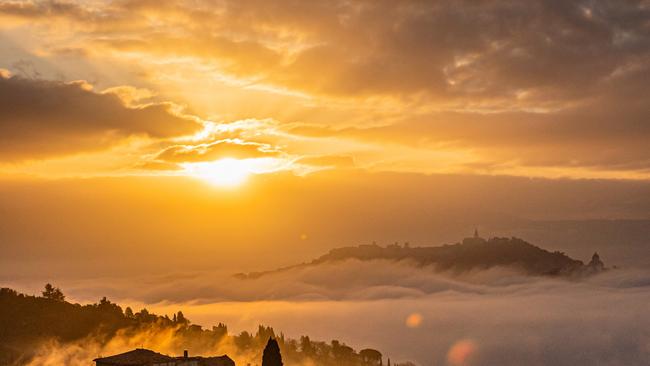
Tuscany might be more seductive but my heart belongs to Umbria. Just south of its better-known neighbour, and blessed with medieval villages, ancient ruins and rolling countryside, this region in central Italy is a pastoral idyll. In the past year, I’ve been fortunate to explore it from the vantage point of a farmhouse near the hilltop town of Todi. Along with my husband, James Hird, we’ve marvelled at the progression of the seasons in Italy’s “green heart”. Autumn and winter called for fires to be lit, especially in the kitchen, where we gravitated to cook, make plans and host friends. Spring has brought wild asparagus sprouting on the farm and on the sides of the roads. I’ve even bought a long foraging stick to avoid prickly situations. Soon we’ll start to plant ciliegiolo, a red grape variety endemic to this area whose name is derived from the word for cherry.
Discover a delicious serving of next-level, food-focused destinations in the latest edition of Travel + Luxury magazine, available online.
For many, the pandemic was a radical catalyst. Some emerged from lockdowns with baking skills, improved French or a yen for scaling Everest. Us? We bought a vineyard in Umbria. James is a sommelier, I’m a writer, and we both share a deep appreciation of vino. The pandemic cemented our desire to find a house in the vines of Europe, but the journey from locked-down in Australia to landlocked in Italy was a circuitous one. Originally, we had our sights set on France. Two years ago, we fell madly in love with a property near Aix-en-Provence, replete with lavender fields and 10 hectares of vines. Sequestered at home in Sydney, we often played the real estate agent’s video of the property, cracked open a bottle of red and swooned over this impossibly pretty farmhouse. In January last year, as the borders opened up, we hightailed it to France to turn over a new leaf.
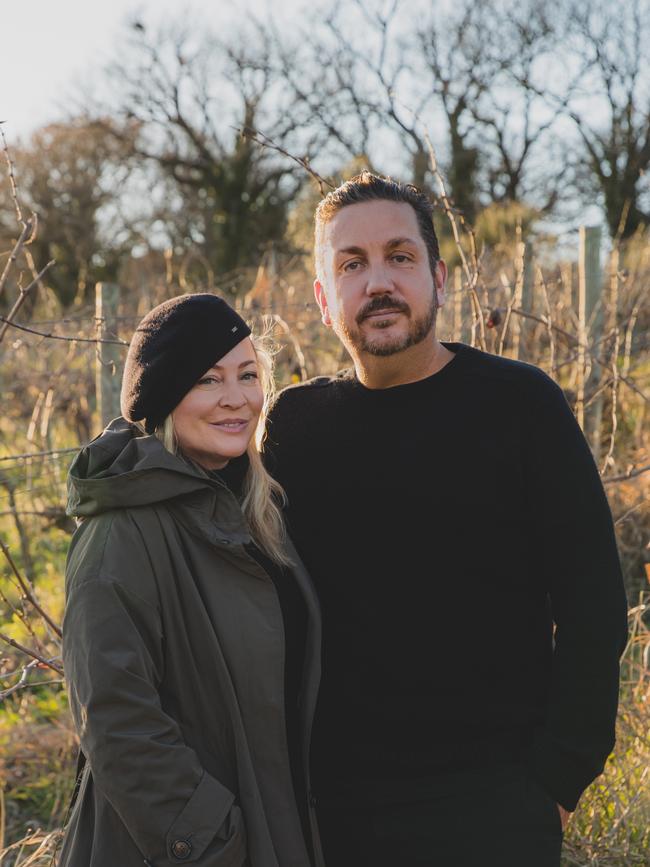
During that month we drove thousands of kilometres in our rental car. Each day we would rendezvous with different agents and assess various contenders, hoping they’d be “the one”. Scrutinising a farm and farmhouse is knottier than sizing up a home. We’d spend a couple of hours with the owner, gleaning insights into their life, studying the winery, tasting the wines, and observing the surrounding area. Sadly, as each day passed, it dawned on us that France, despite its obvious beauty and magic, was not going to be the right fit for us. The farmhouse style property we longed for was either not surrounded by vines or beyond our budget. Despite making a couple of offers, we left France feeling deflated.
In May last year, we headed once more to Europe, this time to Italy, with renewed vigour. We slipped back easily into life on the road, with our daily rituals of Autogrill breakfasts, meeting agents and chatting with owners. Through Lazio, Tuscany and Piedmont we drove, still not finding our perfetto match. Things were too large, too small, too creepy, or too expensive, and we despaired about our plans. Days before we were due to fly home, we had lunch in Rome with friends and architects Carl Pickering and Claudio Lazzarini, who encouraged us to keep searching. Later that day we had a call from an agent informing us of a property that had recently come on the market in Umbria. The region was outside our search area, but as she described the vineyards, farmhouse and the landscape it piqued my curiosity. James wasn’t initially keen, but we headed north anyway; fortunately, it was only 90 minutes from Rome. In the car we reflected on our fruitless quest, and laughed uproariously at all the odd moments.
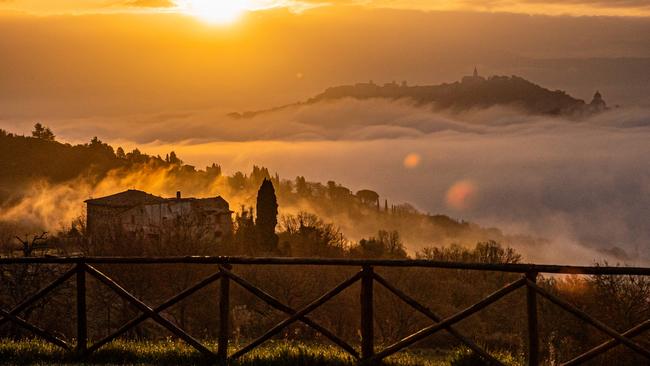
As we climbed the hill towards the property, we began to feel a little more optimistic. Despite the drought and the heatwave Italy was enduring, everything appeared green and the vines were healthy. At the top, the farm looked onto Todi, the picturesque town that’s been inhabited since Etruscan times, which was reassuring. As the gates opened, neither of us could suppress a wide smile. The vines beside the driveway were laden with fruit, and we passed olive trees, pomegranates, indigenous herbs and a plethora of local flora. As we explored the grounds, we were both lost for words. I knew little of the area, spoke scant Italian, but it was clear to both of us that this was a remarkable place. Two days later, after some checks on the land and house were complete, we made an offer. The wait was excruciating, there were other interested parties, but in the end we got it.
Before our journey began, we realised the most ambitious part of our plan was running the agricultural side of the property. Neither of us has any experience working on a vineyard, and despite spending much of my childhood in rural Australia, Umbria was worlds apart. We reached out to friends for guidance and, thanks to Barossan winemaker Tom Shobbrook, caught a break. Tom had produced several vintages in Italy and recommended agronomist extraordinaire Adriano Zago. We’d reached out to Adriano some years earlier, just before we began our search, and knew immediately he was the right person. And since he’s based in nearby Tuscany, it seemed especially fortuitous. In October last year, we began working together in earnest.
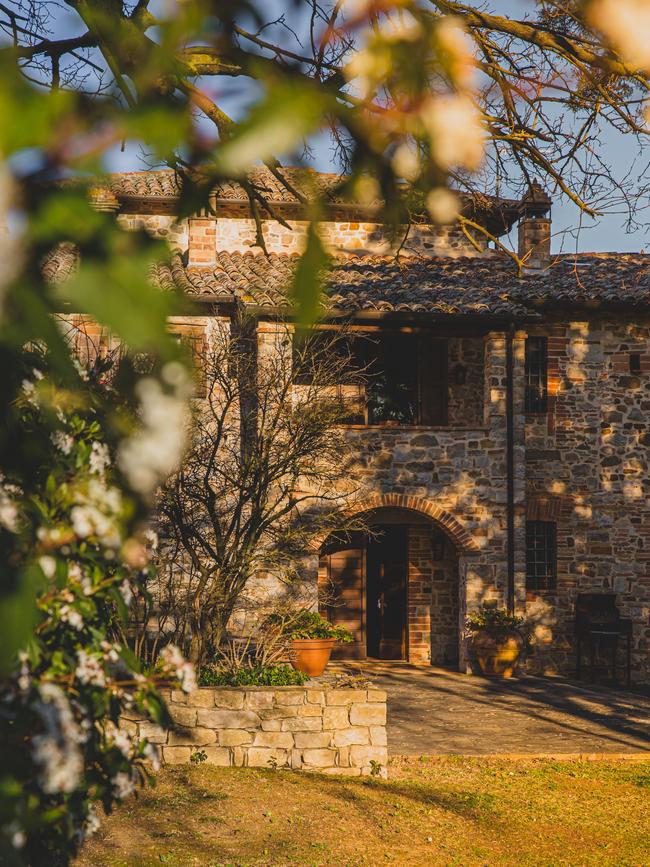
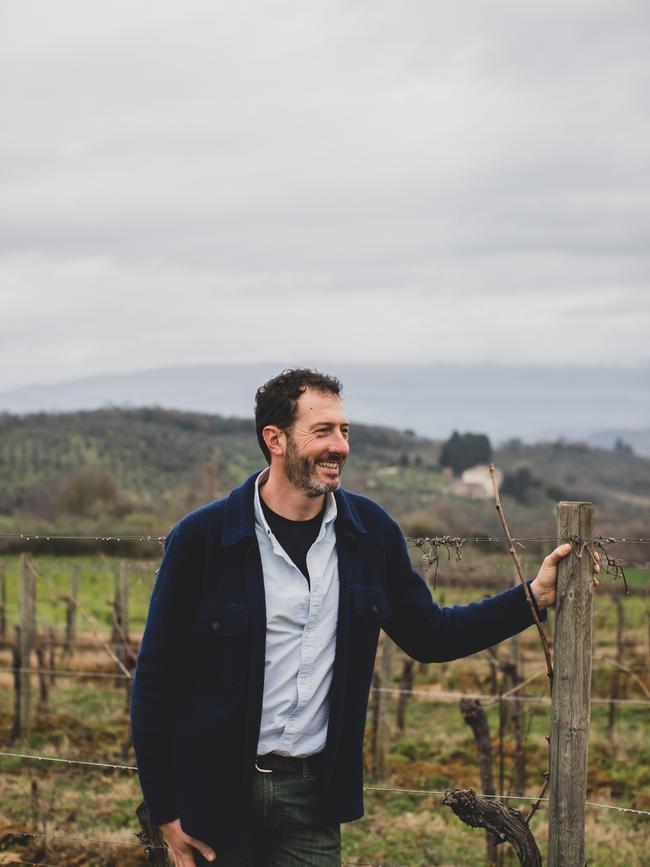
The farm has been steadily producing crops, grapes, and olives for years and we’ve now begun the process to convert the property to biodynamic farming. The vineyards are around 500 metres above sea level and the soils are predominantly clay with streaks of limestone. The ciliegiolo we plant later this year will become the main variety we grow, with a view to produce light, luscious reds with soft tannins. Before we get to a place in the next few years where the wines have a sense of the estate, we’re producing drops under the label Stesso Stesso (“same same”). During this initial foray we’ll learn all we can about the site, experiment with different techniques, and hone our signature approach. The next generation of wines will be Same Same but different.
At the same time we’ve experienced a tremendous fermentation of ideas and discovered many cultural quirks. Early-morning gunshots in the woods were at first alarming, but we’ve since eased into the hunting season for the cinghiale, or wild boar, and embraced the local hunters, who have right of way on our land. The boar can destroy a fruit-laden vineyard in a single evening. We’ve made friends with our local butcher, Gianni, who lives in the tiny nearby village of Mannella. He organised fresh cinghiale for us, and so was born the recipe of delicious “winemakers’ revenge sausage rolls” and “chilli con cinghiale”. On Saturdays, Gianni prepares the tastiest porchetta panini in the land. The warmth and sense of community is palpable, and in such a short space of time, I feel very much part of it.
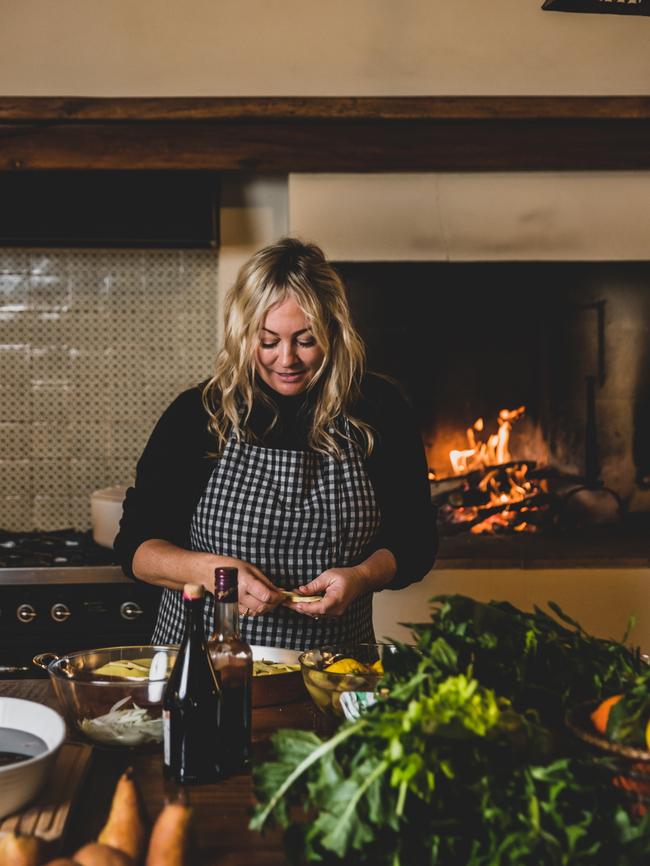
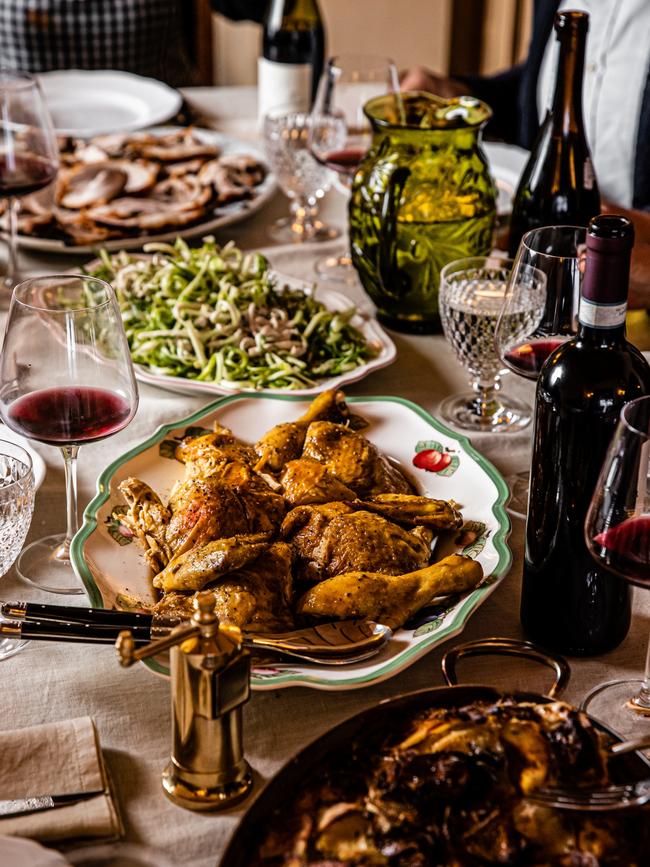
For months, we workshopped a potential name for the budding vineyard. It was sweet relief when it finally bubbled up to the surface: an interlacing of our grandmothers’ names in Beulah Violetta Vineyard, which has so much meaning to both of us. Honouring these two strong-willed and wonderful women, who were once in our lives and always in our hearts, felt so right. Beulah Tucker, my Nanna, was a South Australian country woman born in the vineyards of McLaren Vale. She worked the land, did the mail run between remote properties, and we were very close. Violet Campbell, James’ grandmother, hailed from London’s East End. She lived through two world wars, was an incredible cook and her wide-ranging travels are an abiding inspiration. In the coming months I can’t wait until we see the wine, pasta, or olive oil bearing their names.
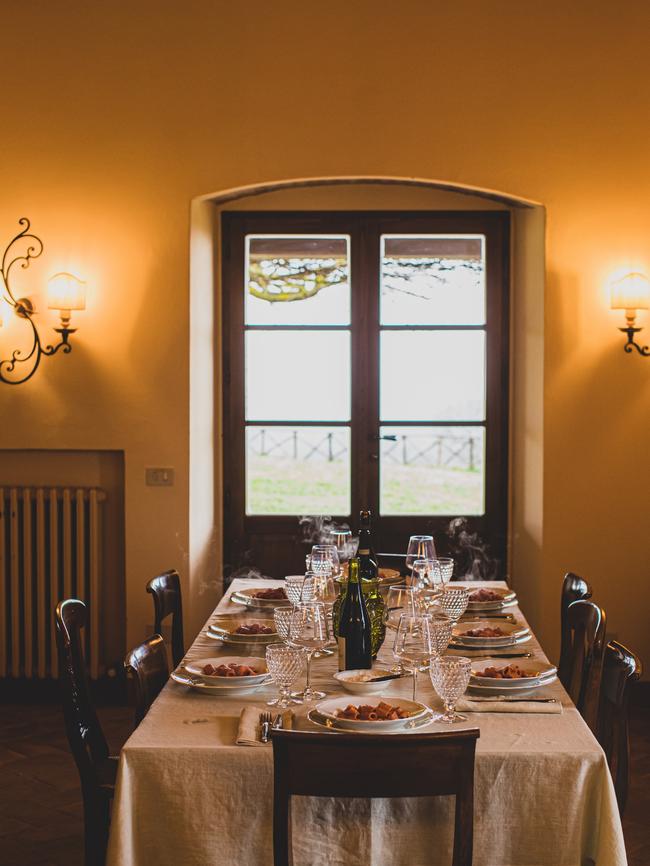
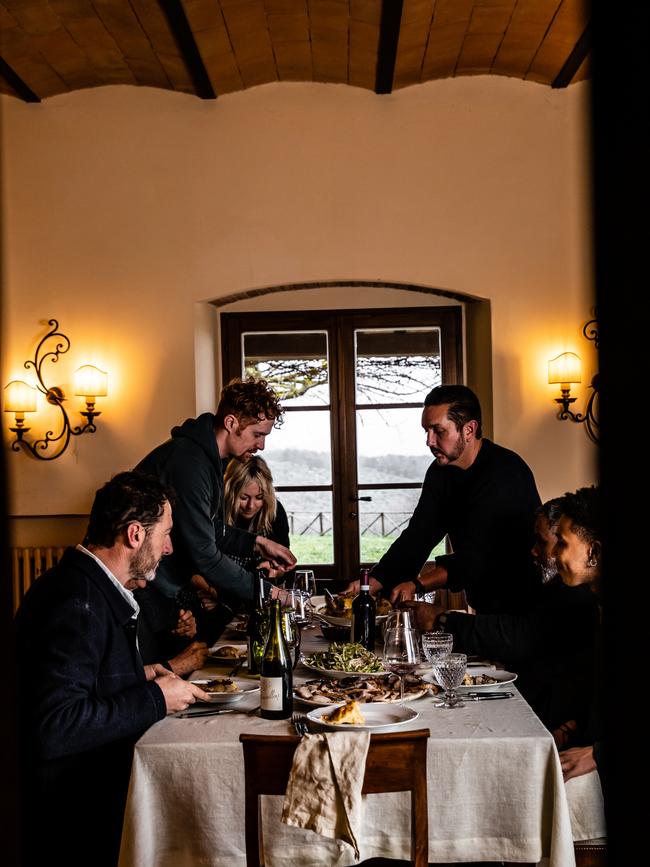
Recently, we had our first visitors from Australia: ebullient wine importer and restaurateur Giorgio De Maria, and talented photographer Nikki To, who captured the lyrical images on these pages. It was heartwarming to share a slice of our Umbrian life with our friends over a series of lunches and dinners at the farm, introducing them to our vineyard team and to our favourite local trattoria, La Mulinella. If you ever find yourself near Todi, La Mulinella’s crostini with pâté and its wild boar tagliatelle are dishes that make a stop more than worthwhile. Those convivial meals inspired the idea of writing a book about our experience, and putting our recipe-testing skills to work. Time will tell, but for now we dream, and wait to see what our first vintage will bring.



To join the conversation, please log in. Don't have an account? Register
Join the conversation, you are commenting as Logout